Genre: Action/Strategy Developer: Mirrorsoft Publisher: Arena Players: 1 Released: 1991
Battlemaster is a strange and interesting game. Originally, it came out in Britain before being ported from Amiga and DOS computers to the Sega Genesis. Advertisements claimed enough gameplay to last 100 hours, 2500 screens worth of graphics, and more. Yet, despite the lofty praise, the game has slipped into obscurity. Is it worth dusting off and playing once more, or would we be better off just admiring the brutally awesome cover art?
Battlemaster is a top-down action game with some elements of real-time-strategy. The most clear inspiration is the Gauntlet series; however, this game seems to have more of an open feel, as you can explore overworld forests, deserts, and mountains, as well as cities and dungeons to gain loot and experience. There are a few simple puzzle mechanics, but the game is mostly a slaughter fest. The story goes that the tensions between the four races of the world have resulted in mutual devastation. The great cities are abandoned and crumbling, and monsters roam the caves and swamps. “The Watcher” descends from above and chooses a warrior to unite the disparate fiefdoms. And by unite, he means “beat into submission.” In addition to subduing the inhabitants of the land, you’ll also be raiding their ruins for treasure and loot. Yeah, there’s not much honor going on in this game and calling you a hero seems quite a stretch.
The developers also clearly took a page from early Dungeons & Dragons games. Character creation is fairly ingenious, allowing you to choose one of four races (human, elf, dwarf, or orc.) Each race has a more favorable or malicious view toward the other (for instance, elven merchants will charge orc characters double price, and dwarven and elven parties passing in the wilderness will immediately attack each other.) This element of racial hostility adds a level of uniqueness to the game and a bit of strategy in dealing with NPCs. There are also four classes to choose from (thief, warrior, wizard, and merchant) each with their own likely obvious attributes. Merchants have an easier time parleying with other races, which plays a big part in the journey through this game.
There’s a large variety of weapons, armor, and rings available, all with unique names and effects. Unfortunately, there’s no option to sell any of the equipment you find, so you’re forced to dump it. Your character has a primary and ranged weapon. There is an online guide that details the complex damage formulas and hit ratios that go into the combat system. It seems with enough time and patience, a player could begin to understand strategies to make combat less of a button-press fest, but without gaining this crucial understanding, most players will be swinging and missing before getting devoured and shutting the console off in irritation. This is one of those cryptic games that seems uninterested in hand-holding or tutorials.
From the start, the animation is stuttery and jittery. Play long enough, and you will eventually get used to it, but most players will not have the stomach to sit through the painfully slow walking. On an emulator with the fast-forward function turned on, the game becomes somewhat bearable, but console purists are in for a long, slow haul. This is honestly the point that will make or break most players, and rightfully so. If the game had been better optimized to the hardware, we might be looking at a fun, still-flawed action-strategy game. The horrendous framerate will render the game mostly unplayable for a lot of gamers, which is a shame, because there’s a lot here of interest.
With the directional pad, you guide a group of four characters through this world. The map is huge and there are multiple branching paths to take you through the various locales, each controlled by one of the four races. If you happen into the territory of a friendly race, you immediately have the option to parley and pay for safe passage, unless you feel like robbing them, which turns everyone hostile towards you. Otherwise, you’ll have to fight it out and keep killing until you slay a certain percentage of the area’s inhabitants. There’s no visual indication of this number, so you’ll be forced to keep killing monsters until the travel option pops up. Complicating matters are the presence of unfriendly monsters which are tougher than regular humans and elves.
The consistently low framerate Battlemaster suffers from must be related to the hordes of enemies the game decides to throw at you. If you can afford it, you can go into battle with a maximum of fifteen fellow warriors. Likewise, you’ll find yourself swamped by massive hordes of twenty to thirty enemies at a time who will absolutely drain your health. The enormous amount of sprites on screen would be more impressive if the game didn’t have to run at a snail’s pace to pull it off. Sadly, this seems like a limitation of the Sega Genesis hardware. The same enemies will sometimes go down in seconds while other times taking nearly minutes to kill. Similarly, sometimes your units will go to town and make short work of the monsters, while other times they seem to immediately implode. There is a system that explains the seeming randomness, but the end result is frustrating more often than not. Adding to the questionable usefulness of your troops is their lack of AI pathfinding. Almost any time you have to navigate through narrow hallways or around bushes, your units will get stuck or wander off. This is due to the rather confusing hit detection, resulting in a lot of cheap deaths. You can at least assemble your troops into different formations in order to better guard or go on the offensive. These options are neat and truly make the player feel like a general commanding their troops.
This is where the controls come to the forefront. It’s not that they are poorly calibrated, but your troops do tend to get stuck or left behind on a regular basis. You must continuously shift your positions in order to guide your troops through some of the denser areas of the game. Adding to the challenge, there are lots of hidden pits that your straggling warriors will accidentally open up and promptly fall into. No sense getting attached to any of these guys, as they tend to die pretty quickly. However, additional units can only be purchased in areas controlled by your race. In addition to the poor hit detection, item usage is unintuitive and awkward. The game sometimes requires quick food consumption to heal up characters, yet there is no one-button solution to this. Instead, you have to head into a clunky menu every time your poor warriors need to take a bite of dragon steak to fuel their health. For some reason, the developers insisted on having the items viewable at all times by building them into the HUD, but accessing them requires navigating back to a window, so what was the point?
The graphics have a certain early, rough-around-the-edges charm to them; however, everything is encased in a large HUD that covers roughly 40% of the screen. You’ll never forget the name Battlemaster, as you’ll be staring at it on the HUD for the entire playthrough. While it is unfortunate that the game must be essentially played through a window, the display does show a map, HP levels, inventory, and more in order to aid in exploration of the world. Characters and monsters are well animated, but some of the levels suffer from unfortunate color decisions, such as a brown key sitting on a brown floor. Due to the desolate, almost post-apocalyptic vibes of the story, there are lots of brown and gray environments that when combined with the downbeat music, make for a somewhat drab playing experience. Amazingly, the graphics seem to be an improvement over the computer originals. For a modest effort, Battlemaster succeeds in depicting its fantasy environments.
Battlemaster carts were not graced with battery saves, so if you want to take a break, you’ll be writing down and inputting absurdly long passwords, probably some of the longest of any game in the Genesis library. And you will have to put them to use, as this is not a quick game. You’ll likely spend several monotonous hours hacking your way through the various locales. The act of powering through the endless swarms of enemies on your way to the Watcher’s Tower ends up being an exercise of willpower and finger-strength. There’s no true final boss and your reward is a bland, nearly static end screen and no credits.
Will your time be well spent with Battlemaster? It depends on what you’re looking for in a game and what you can overlook. For all its flaws and frustrations, I can’t pan it entirely, despite the abysmal slowness and overabundance of enemy swarms. The cheapness of some areas is frustrating, but upon death, the game does let you either start back at the same level or go back to previous levels to pick up more supplies. Gamers looking for brutally challenging old-school action with a strategic layer will probably find some enjoyment here but be ready to put in some time dying repeatedly on your quest for bloodshed and glory.
SCORE: 4 out of 10

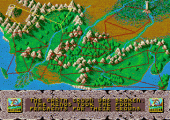
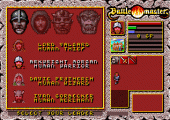
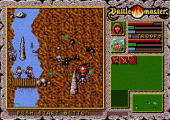
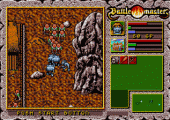
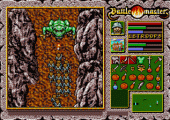
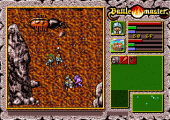
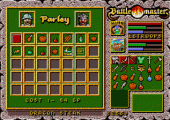
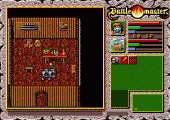

Recent Comments